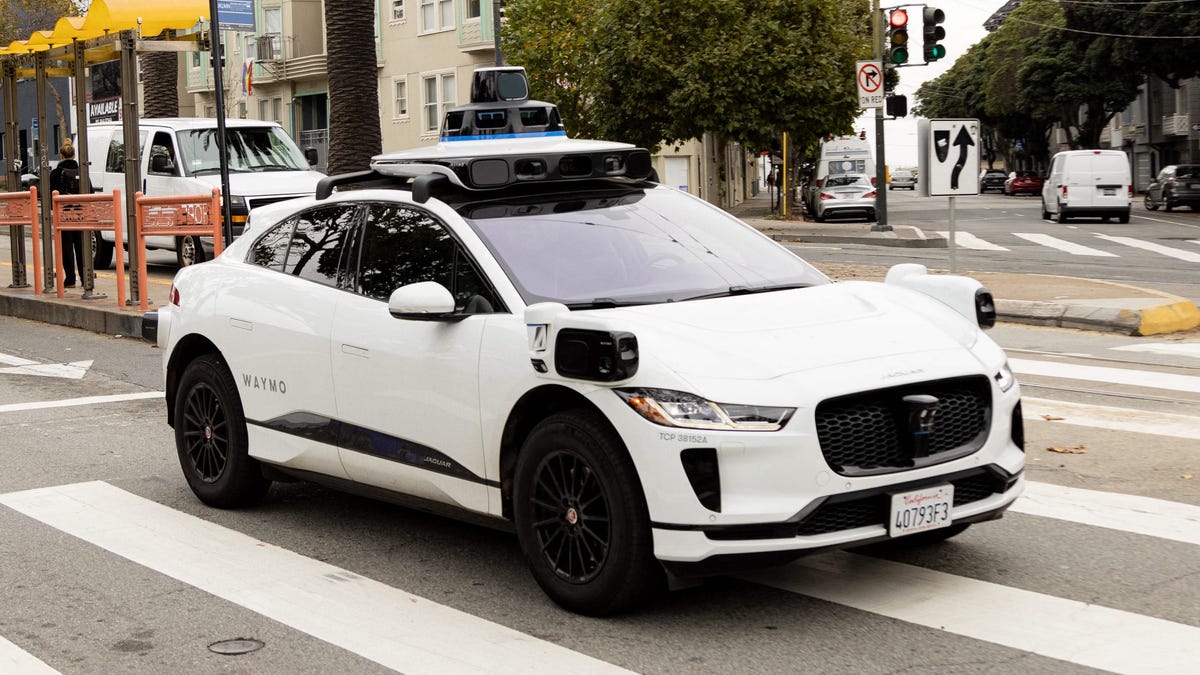Automated driving technology has come a long way in the last 20 years, but it still isn’t great, and it certainly won’t replace all or even most drivers before the end of the decade. Still, in a few select cities with consistently fair weather, you can already get a ride in a Waymo robotaxi. For residents of, say, Phoenix or San Francisco, those robotaxis are a regular sight. They certainly aren’t perfect, but how good are they, really? Well, recently, our friends at Wired followed one for an entire workday to find out.
The plan was pretty simple: get a driver in a chase car, fill it with several Wired staffers, find a robotaxi and see what it does throughout the day. Would it drive responsibly? Would it be too much of a stickler for the rules and create other problems? Would it get confused? Would it make mistakes? Would everyone die in a fiery crash? Would the passengers they followed get mad? Only time and a little bit of Waymo stalking would tell.
Unfortunately for Gabe, the driver, and the Wired staffers who were along for the ride, it took them a while to find a robotaxi that was actually picking up passengers. The first two they followed were ultimately a waste of time. As a Waymo spokesperson later explained to Wired, during slow periods, the robotaxis reposition themselves to be ready for busier times of day. From a traffic management perspective, it isn’t great for a bunch of empty cars to be driving around on urban streets, but at least that’s reportedly a lot less common when traffic is heavier. Eventually, though, they did find a Waymo picking up a passenger:
We are just over two hours into the chase, at 12:39 pm, when our fourth Waymo picks up our first fare of the day. It happens on a picturesque residential street in the foggy Sunset District, near Golden Gate Park. A young couple dressed all in black comes out of a house, both filming as they walk up to the Waymo, its rooftop display flashing their initials. “Look at them,” Gabe says from our safe distance down the street. “It’s like it’s Christmas. Look how happy they are.”
The robotaxi whisks the couple northeast, past the Victorian houses from the TV show Full House (“I used to see Bob Saget in comedy shows,” says Gabe), the old St. Mary’s Cathedral (“The bricks around the foundation were ballast from sailing ships”), and the spot where an empty Waymo was recently set upon by a mob and then allegedly lit on fire by a teenager. After 39 minutes, at 1:23 pm, we pull to a stop in North Beach, in front of City Lights booksellers, and two of us hop out to flag the couple down.
When WIRED lets on that it’s been following them, both passengers look like they’ve just swallowed a bug. But however flummoxed Andrew Dong is by us, he’s unequivocal about Waymo: “Probably the best rideshare experience I’ve ever had.” He loved—as everyone seems to—that there was no stranger in the car and how smooth the ride was. (This is another recurring theme in paeans to Waymo: The stops are less stoppy, the starts less starty.) Dong is a software engineer visiting from New York and says if he had the option, he’d never hail another Uber or Lyft again. “This is all I would take.
After several hours, even Gabe the driver was reportedly starting to come around to the idea of robotaxis:
It started in the late morning, when he noticed our Waymos taking many of his favorite shortcuts. Now as traffic picks up into the afternoon, Gabe has more and more moments of respect for our robot prey. At one point our Waymo almost loses us by accelerating through a yellow light; Gabe floors it and barely gets in under the wire. “I’m surprised,” Gabe says. “It kind of ran the yellow, didn’t it?”
A few minutes later, the Waymo does lose us for a minute after turning left at a light we can’t catch. Gabe recovers by hanging an instant right and then doing a U-turn of questionable legality. His dignity is intact, but he’s a little stung.
Those are the Waymo driver’s frisky moments. At other times Gabe is impressed with its strategic caution. At one stoplight, he studies 53499F3 like it’s a horse at a starting gate. “Do you see how they program it to not charge out into the intersection as soon as the light turns green?” he says. “That’s how a cabbie would drive.”
Ultimately, after six hours of following Waymos, they didn’t report seeing any egregious driving errors, although one woman they interviewed did report previously having to call customer support when her robotaxi got confused by some cones. Plenty of other incidents with Waymo robotaxis have also made the news over the years, so we’re far from ready to declare the age of human drivers is over. At the same time, though, it sounds like Wired’s driver was legitimately impressed with how the robotaxis they followed drove, and we don’t want to discount that, either.
Waymo has plans to expand into a few more cities soon, so it won’t be long before we see how they handle Atlanta traffic. Still, it would also be great to see testing and demonstrations in cities that get both rain and snow. Rochester, New York anyone? Maybe Detroit?
Ultimately, there’s far too much in the original article for us to summarize here, so be sure to head over to Wired and give the entire article a read. If anything, just do it because Gabe’s sense of humor is great, and the whole thing is genuinely an entertaining read.

